
UX Workshops • UI Design • Journey Map • Wireframes • Prototypes
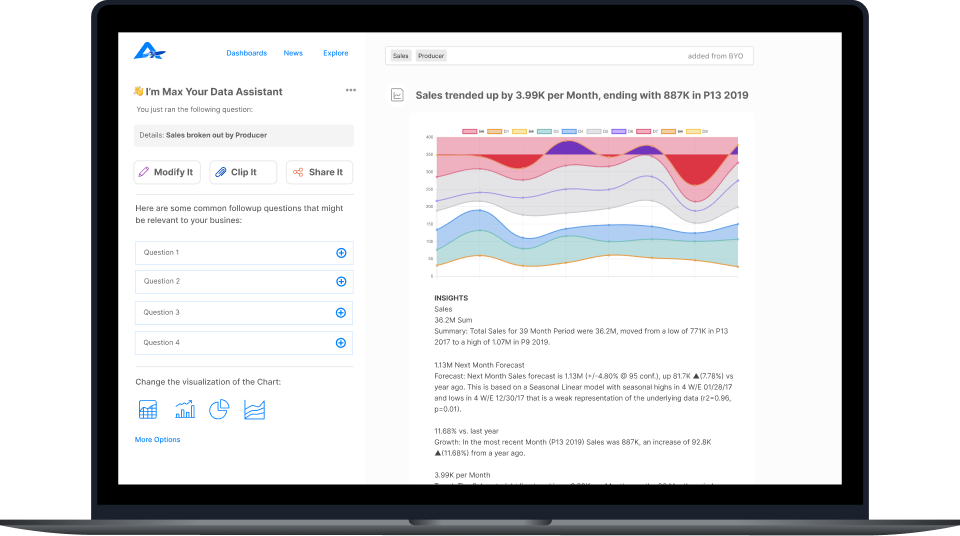
Max is an AI assistant for data analysis, enabling users to ask questions in natural language and receive clear, narrative-driven insights, accelerating data analysis by 10x. As the Senior UX Designer at AnswerRocket, I worked closely with the product team to design and present the early version of Max to stakeholders. This product later became the company's flagship offering.
Max is now AnswerRocket's key product offering contributing to over $19 million in sales annually.
UX Workshops
I facilitated remote idea generation, empathy mapping and sketching workshops with the product, service and engineering teams to extract as many ideas as possible into this new product.
User Journey Map to Align all Stakeholders
Using insights from the UX workshops and previous customer research, I developed a user journey map that helped align the team on key challenges.
Advanced Prototyping to Align Stakeholders
I developed and managed wireframes and UI prototypes to facilitate clear communication between the product and engineering teams throughout the project.
Mentoring Jr Product Owners
I mentored junior product owners, guiding them through design tasks, user workflows, and UX workshops, ensuring their active participation throughout the project.
The company had extensive knowledge about the legacy product across various teams, including services, product, and marketing, which I recognized as valuable for this project. I conducted empathy mapping workshops with key stakeholders and reviewed past research to create the user journey map below, aligning everyone around the user experience.
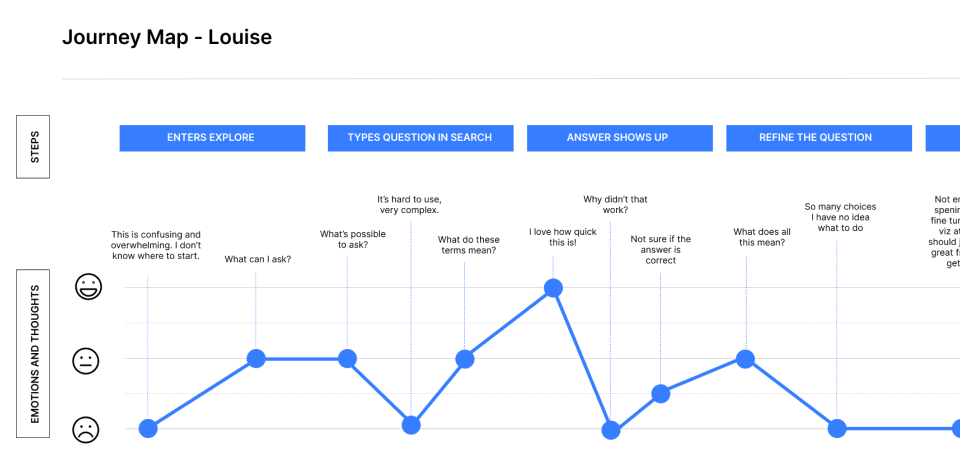
User Journey Map to align stakeholders around the user experience.
I collaborated with the product team, key stakeholders, and the CEO through multiple rounds of low-fidelity wireframes to clearly communicate our vision for the new application. Engineering was involved early to assess how we could leverage existing legacy code to streamline development.
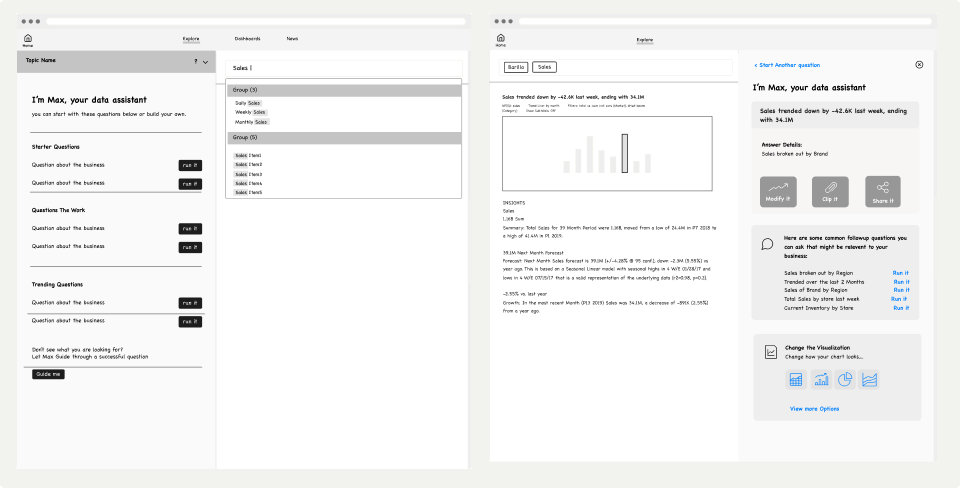
Working with stakeholders and Engineering with rounds of wireframes
As a product team, we were moving quickly without proper validation, a concern I consistently raised. Despite having extensive experience conducting user testing with customers, I encountered resistance due to tight deadlines. I put together a presentation to the product team to convey the following points below.
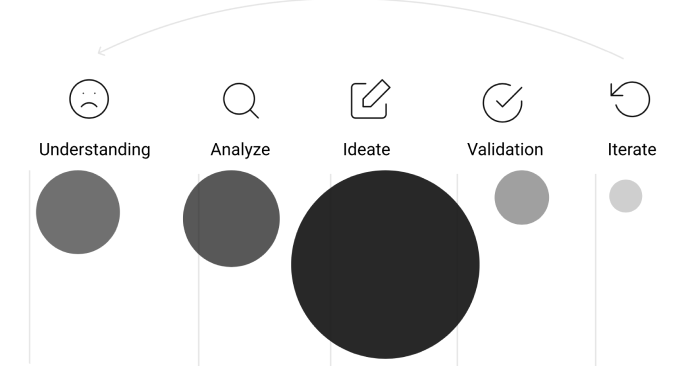
We were spending too much time in the ideate phase.
I researched tools that would allow us to validate our assumptions efficiently without significantly impacting project timelines and presented my findings to the product team. Ultimately, stakeholders decided to proceed directly to the UI screen phase to maintain the development schedule.

Presented tools like Maze and User Interviews so we can validate our assumptions quickly without impacting the project timeline.
I transitioned into UI design to effectively communicate the product team's vision for Max and foster alignment across the organization. I created functional prototypes to help engineering understand user flows and interactions.
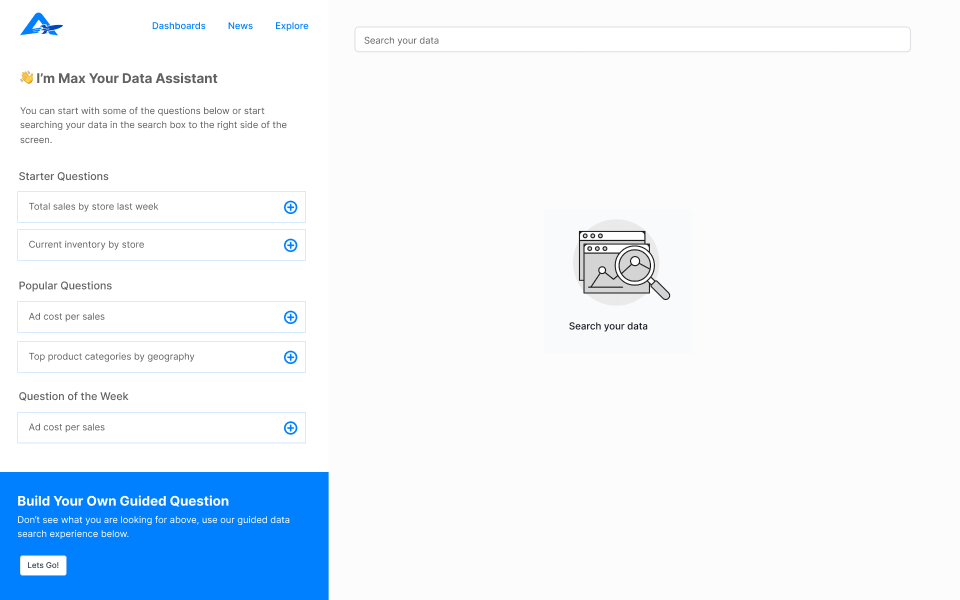
The empty state features options to explore Starter Questions, Popular Questions, or the Question of the Week. Additionally, users have the capability to initiate a data search from scratch.
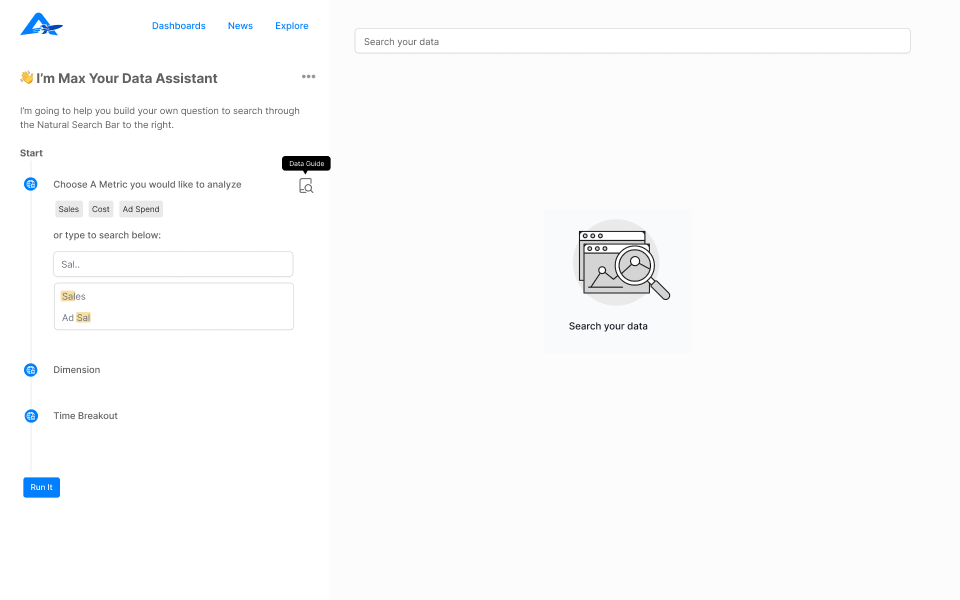
In this section, users can create their own questions through a guided interactive experience. A Data Guide is also available for users who may not be familiar with data terminology.
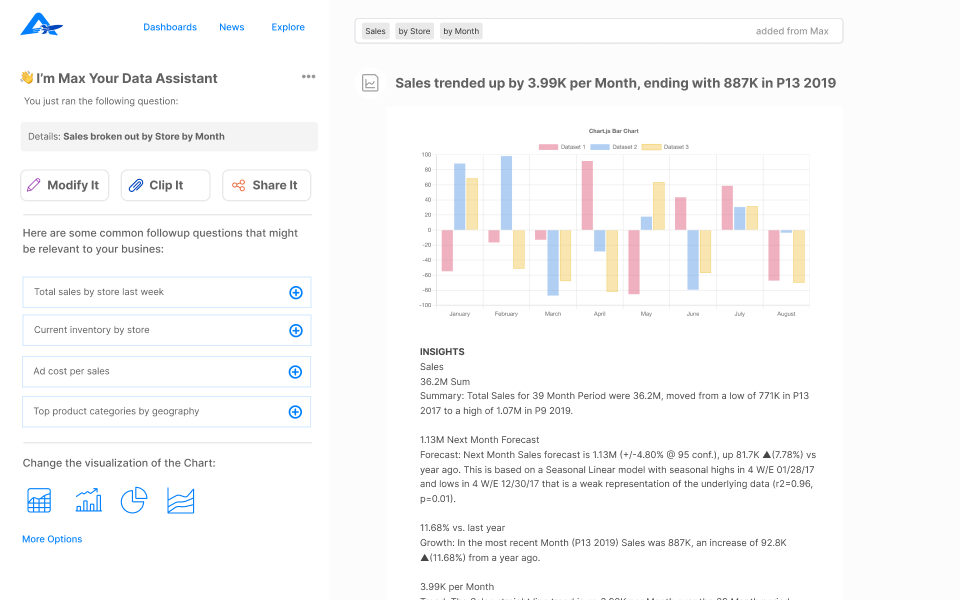
The questions are executed, providing comprehensive visualizations. Users can interact with the results by asking follow-up questions or modifying the initial query.
Ultimately, Max became a highly successful product for the organization in the years following this project. I transitioned out of the organization before its release to current customers.
At the outset of this project, we achieved alignment through empathy mapping and a journey map, which helped us gain a deep understanding of customer and user needs for Max. In hindsight, I would have established benchmark metrics from the journey map to measure improvements in user experience, emotional impact, and overall satisfaction, ultimately aiming to reduce customer service support costs.